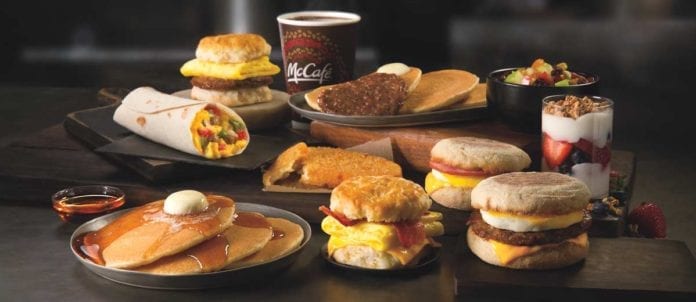It’s long been suggested that breakfast is the most important meal of the day. While this adage has its origins in health and wellness, the modern-day foodservice operator has also come to learn about the importance of breakfast as a daypart.
Case in point, in mid-December McDonald’s Canada opened its first standalone McCafé in Toronto’s Union Station. Given the company’s recent successful introduction of all-day breakfast in the U.S., the move to expand its McCafé brand in Canada comes as no surprise. After all, in the Canadian QSR market, breakfast/brunch is the fastest-growing daypart with 22 per cent growth year-over-year. This number far outpaces the overall breakfast/brunch daypart growth rate of two per cent of total foodservice. Similarly, in the U.S., breakfast/morning meal visits grew by five per cent in the year ending June 2015 over the same period last year (when visits grew by two per cent), according to The NPD Group. Quick-service restaurants, including retail foodservice, were responsible for most of the visit gains at breakfast.
The Argument for All-day Breakfast
In the U.S., an initial read on McDonald’s recent breakfast offering finds that, at the outset, the program has been successful in attracting new or lapsed buyers and increasing lunch visits. The NPD study, which is based on its receipt-harvesting service, Checkout Tracking, analyzed a database containing receipts from more than 27,000 McDonald’s static buyers who visited before and after the McDonald’s all-day breakfast launch and found there was a sizeable lift in breakfast food orders throughout the day.
Looking at the purchase behaviour of McDonald’s breakfast buyers who purchased breakfast foods beyond traditional breakfast hours, NPD found a third of these buyers had not purchased from McDonald’s at all prior to the all-day breakfast launch on Oct. 6. The study also found McDonald’s customers did order breakfast foods beyond traditional breakfast hours, and were most interested in ordering these items at lunch — the chain’s busiest time of day. Among consumers purchasing breakfast foods at McDonald’s during lunch hours, 61 per cent of receipts also included non-breakfast items, contributing to a bump in average check size.
Breakfast food orders throughout the day increased from 39 per cent pre-launch to 47 per cent post-launch, according to the NPD Checkout Tracking study. While all-day breakfast has not yet been rolled out in Canada, there is reason to believe the Canadian market would react positively to an all-day breakfast offering; especially when you consider the QSR breakfast/brunch segment in Canada is worth approximately $5 billion and savvy operators are continuously looking for ways to win share and increase consumer visits. Given the demand and the prospect for growth in the space, it’s no wonder brands such as McDonald’s, Tim Hortons and Starbucks are competing feverishly to stake a claim. There are also a number of smaller operators in the fast-casual space who are looking to make their mark on the breakfast segment. Regardless of whether or not McDonald’s ends up bringing its all-day breakfast offering to Canada, the popularity of the breakfast daypart is sure to attract significant attention in 2016.
Volume 48, Number 11
Written By: Robert Carter



















[…] daypart continues to grow as consumers seek convenient, quick and nutritious foods on the go. Breakfast isn’t just for mornings either. McDonald’s, for example, now offers all-day breakfast […]